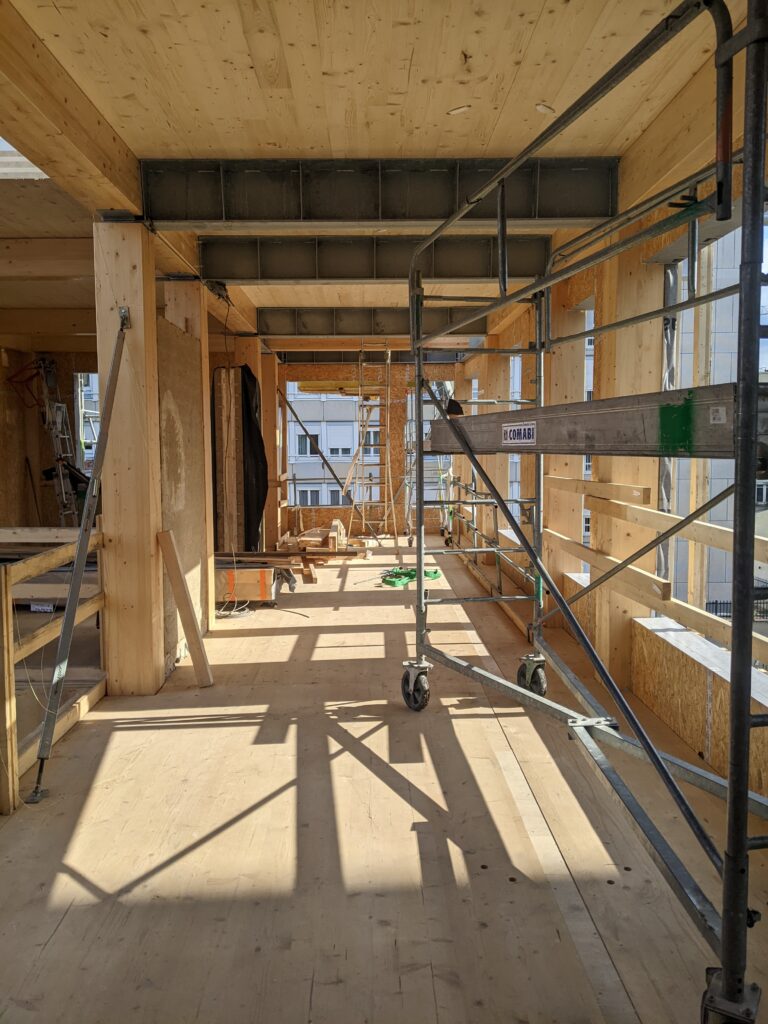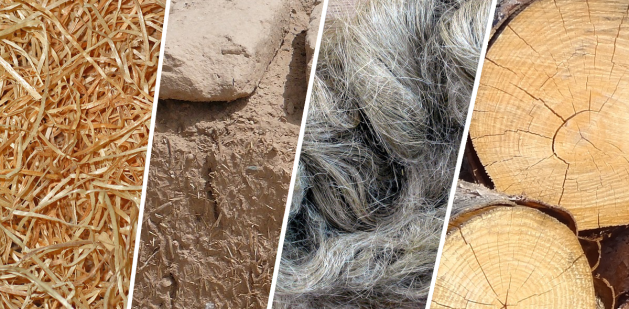The right material, into the right place
How to set up the right material into the right place in a building ? When it comes to building, the choice of materials is of vital importance in terms of strength, durability, and energy efficiency. Among the most crucial decisions, the one concerning building materials and insulating materials is paramount.
This comparison aims to shed light on the advantages and disadvantages of each type of material, enabling you to make informed choices.
Comparison criteria chosen :
– Thermal performance: insulating materials generally outperform building materials in terms of thermal insulation.
– Cost: building materials may be cheaper to buy, but insulating materials can save energy in the long term.
– Durability: building materials are often more durable and require less maintenance than insulating materials.
– Application: Both types of material are essential in construction, but their applications vary according to the specific needs of the project.

Building materials
Building materials are used to erect the basic structure of a building. They must be strong, durable and able to withstand the loads imposed by the structure. Here are some of the most commonly used construction materials:
- Concrete: renowned for its strength and versatility, concrete is widely used in the construction of foundations, walls and slabs.
- Wood: this natural material is appreciated for its lightness, ease of handling and aesthetic appeal. It is often used in the construction of frameworks and exterior cladding.
- Steel: known for its resistance to stress and durability, steel is used in the construction of metal structures, beams and columns.

Alternative building materials
In addition to traditional building materials such as concrete, wood and steel, there is a whole range of alternative materials that offer unique advantages in terms of durability, energy efficiency and environmental friendliness. Here are just a few examples of these materials:
- Earth: raw earth construction, also known as “rammed earth construction” or “adobe construction”, uses earth mixed with straw or other fibers to form strong, durable walls. This ancient technique is environmentally friendly and provides excellent thermal and acoustic insulation.
- Stone: building with natural stone is appreciated for its solidity, durability, and timeless aesthetic appeal. Materials such as granite, limestone and sandstone are used to build walls, foundations, and external cladding, particularly in regions where these materials are abundant.
- Straw: straw construction involves using compressed straw bales to form load-bearing walls or infill between timber frames. This renewable and inexpensive material provides exceptional thermal insulation and helps to reduce the carbon footprint of buildings.
- Hemp: building materials made from hemp, such as chenevotte (fibers from the hemp stalk) mixed with lime, offer high-quality thermal and acoustic insulation. What’s more, hemp is an environmentally-friendly material that requires little water or chemical inputs to grow.

Each of these alternative materials has unique characteristics that make them suitable for different types of construction project. By exploring these options, builders and architects can not only create sustainable, eco-responsible buildings, but also help to promote innovation and diversity in the construction sector.
| Technical caracteristics | Concrete | Wood | Steel | Earth | Stone |
| Compressive strength | High | Medium | High | Medium | High |
| Tensile strength | Medium | High | High | Low | High |
| Flexural strength | High | High | High | Medium | High |
| Fire resistance | Low | Medium | High | High | High |
| Durability | High | Medium | High | Medium | High |
| Environmental impact | Medium | Low | High | Low | Moyen |
| Thermal inertia | High | Medium | High | High | High |
| Thermal conductivity (λ) | Low | Medium | Medium | Low | Medium |
| Installation | Hard | Easy | Hard | Hard | Hard |
| Cost | Medium-high | Medium-high | High | High | Medium |
- Thermal conductivity (λ): the lower the value of λ, the better the thermal insulation of the material.
- Compressive strength: indicates the material’s ability to withstand loads without deforming.
- Moisture resistance: assesses the material’s ability to maintain its performance in the presence of moisture.
- Fire resistance: indicates the material’s reaction to fire and its ability to delay its spread.
- Durability: assesses the longevity of the material and its ability to maintain its performance over time.
- Environmental impact: assesses the material’s ecological footprint, taking into account its manufacture, transport, use and end-of-life.
- Thermal inertia: the greater the thermal inertia, the greater the material’s ability to store and release heat, which can help to stabilise the indoor temperature.
- Tensile strength: ability to resist a tensile force that attempts to pull the material in opposite directions.
- Flexural strength: ability to resist a force that tends to bend or deform the material.
- Installation: assessment of the complexity and difficulty of installing the material during construction.
- Cost: estimate of the relative cost of the material compared to other options. Values are approximate and may vary depending on various factors such as regional availability, quantities required, etc.
Insulating materials
Insulating materials are used to regulate the temperature inside buildings, minimise heat and cold loss and improve energy efficiency. Here are a few examples of insulating materials:
Insulation materials used in construction can be divided into two main categories depending on their origin: mineral insulation materials and plant-based insulation materials.
Mineral insulation:
- Glass wool: made from recycled glass, glass wool is an effective thermal and acoustic insulator widely used in residential and commercial buildings.
- Rockwool: produced from volcanic rocks such as basalt, rockwool is fire-resistant and provides excellent thermal and acoustic insulation.
- Extruded Polystyrene Foam (XPS): Although it is a plastic insulator, it is classified as mineral because it is manufactured from raw materials such as crude oil and natural gas. It is used in applications requiring moisture resistance.

Plant-based insulation:
- Straw: compressed straw bales are used as insulation in the construction of walls and roofs. They provide excellent thermal insulation and are environmentally friendly.
- Hemp: hemp fibers mixed with lime are used to create insulating panels. Hemp provides good thermal insulation and regulates humidity.
- Wood fiber: made from recycled wood residues, wood fiber is used to make insulating panels. It provides good thermal and acoustic insulation while being environmentally friendly.

When choosing between mineral and plant-based insulation, builders can take into account factors such as thermal performance, acoustic properties, durability, and environmental impact to meet the specific needs of their construction project.
| Technical caracteristics | Glass wool | Rockwool | Extruded Polystyrene Foam (XPS) | Straw | Hemp | Wood fibre |
| Thermal conductivity (λ) | Medium | Medium | Low | Low | Low | Medium |
| Compressive strength | Low | High | High | Medium | Medium | High |
| Moisture resistance | Low | High | High | Low | Medium | Low |
| Fire resistance | Medium | High | Moyenne | High | Medium | Medium |
| Durability | Medium | High | Élevée | Medium | Medium | Élevée |
| Environmental impact | Medium | Medium | Medium | Low | Low | Low |
| Thermal inertia | Low | High | Low | High | High | Moyenne |
| Effusivity | Medium | Medium | Low | High | Medium | Medium |
| Diffusivity | Medium | Medium | Low | High | Medium | Medium |
- Effusivity: effusivity measures a material’s ability to absorb and release heat. A material with a high effusivity can heat up or cool down quickly, while a material with a low effusivity tends to maintain a constant temperature.
- Diffusivity: diffusivity measures the speed at which heat propagates through a material. A material with a high diffusivity tends to distribute heat more quickly, while a material with a low diffusivity propagates heat more slowly.
To find out more:
https://www.usinenouvelle.com/article/le-bon-materiau-au-bon-endroit.N1855632
https://www.batiactu.com/edito/pronons-bon-materiau-au-bon-endroit-nathalie-tchang-59575.php

